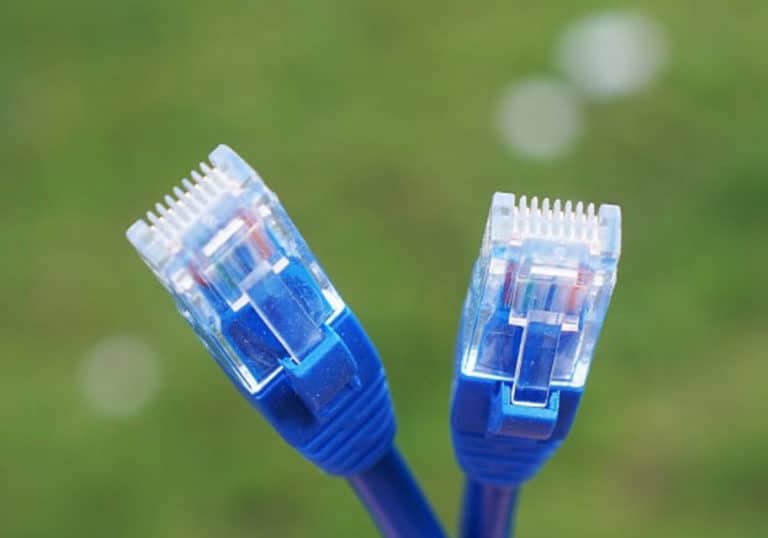Ethernet cables are not created equally. There are ones that are better for long-distance, while others are built for longevity. If you discovered that you need to change your ethernet cables, or is planning to switch from Wi-Fi to a wired connection, read this guide to know how to pick the right ethernet cable for your needs.
Ethernet Cable Categories
Ethernet cables are divided into categories (cat=categories) based on bandwidth (MHz), maximum data rate (megabits per second/Mbps), and shielding (the material used for covering the ethernet cable).
- Cat 1 – As the first ethernet cable made, Cat1 ethernet cable is used for wiring telephone systems and analog voice communications at home and businesses. Cat1 is designed with unshielded twisted pair of copper wires.
- Cat 2 – Cat 2 cables were used in the 1980s for IBM Token Ring networks and features up to 4Mbps data transmission rates.
- Cat 3 – Cat3 was first used in the 90s for digital voice communications and 10BaseT ethernet networks. This is considered the last of “old ethernet cabling,” which isn’t recommended for use in 2022 anymore, but can still be present in older buildings and warehouses.
- Cat 4 – Because the data rate of Cat4 only goes up to 16Mbps, category 4 ethernet cables are considered outdated for today’s requirements.
- Cat 5 – Category 5 ethernet cables are known as the standard cables used today. It features of up to 100 Mbps data rate and speeds of up to 1Gbps. Category 5e or Cat5e isn’t really an official cable category, but manufacturers use it to describe the upgraded cat5 cable dedicated for newer network installations.
- Cat 6 – Cat6 is similar to Cat5e, offering bandwidth and data transfer rates of up to 1Gbps within 100 miles. These ethernet cables are the fastest residential or small business cabling available. When used at shorter distances (around 37 miles or less), these Cat6 cables could offer 10Gbps speeds thanks to modern shielding designs and improved bandwidth specifications. Cat6a, known as the augmented ethernet category, is also available and boasts of a 500MHz bandwidth.
While there are Cat 7 and Cat 8 ethernet cables already in the market in 2022, Cat5/Cat5e (and some cat6) continue to be the standard choice most network systems and home users.
Ethernet Cable Shielding and Styles
Shielding makes cable thicker and less flexible, which also means it is more challenging to install. However, some ethernet cables need to be shielded to protect the cable from ESD (electrostatic discharge) and EMI (electromagnetic interferences) caused by fluorescent lights, power lines, air conditioners, generators, printers, large machinery, and other external interferences.
There are several shielding options, but the two most chosen ones are:
- Shielded twisted pair (STP) cables
- Unshielded twisted pair (UTP) cables
Twisted pair cables are designed with two conductors of a single circuit that are twisted together so that noise or EMI is reduced or eliminated.
Some cable manufacturers also indicate twist rate (number of twists per inch/centimeter) on newer cables from Cat5e onward. Cat5e has a 4 twists-per-inch twist rate, while Cat6 ethernet cables have a 5 twists-per-inch twist rate.
Ethernet Cable Length
The maximum length of ethernet cables, regardless of category or style, is around 100 meters. That’s 328 feet worth of cables on a single run. If you decide to use a cable longer than this, it could cause problems like dropped packets, signal loss or overall reduced performance.
You may be able to exceed this cable length limit, but prepare to face a decrease in connectivity speeds along with the overall reliability of your network. Sometimes, a good quality ethernet cable with shielding can be used for longer than 100 meters on a single run, but installation would be tricky since cable runs are rarely straight and installations always will have a buffer for twists and turns.
Generally, the further a signal has to travel inside the cable, the more it will degrade, causing distortion, noise and a phase where the signal can becomes undetectable.
Ethernet Cable Installation Location
When choosing ethernet cables, you also have to consider the installation location. You have to refer to the fire safety or jacket rating.
If you’re planning on running ethernet cables under the floors, in walls and ceilings, you have an option to use either a rise-rated (CMR) cable or a plenum-rated (CMP) cable. Whichever you choose, it is required that you use cables that meet the local fire safety requirement. Usually, this refers to the NFPA’s National Electric Code.
While there are several cable jacket ratings, you’re probably going to be choosing between general purpose, riser and plenum-rated.
The Importance of Using the Right Ethernet Cables
Picking between ethernet cables is important to prevent electromagnetic interferences, so consider the speed/data rate (or cable category), shielding (cable protection), cable length, and installation location.

